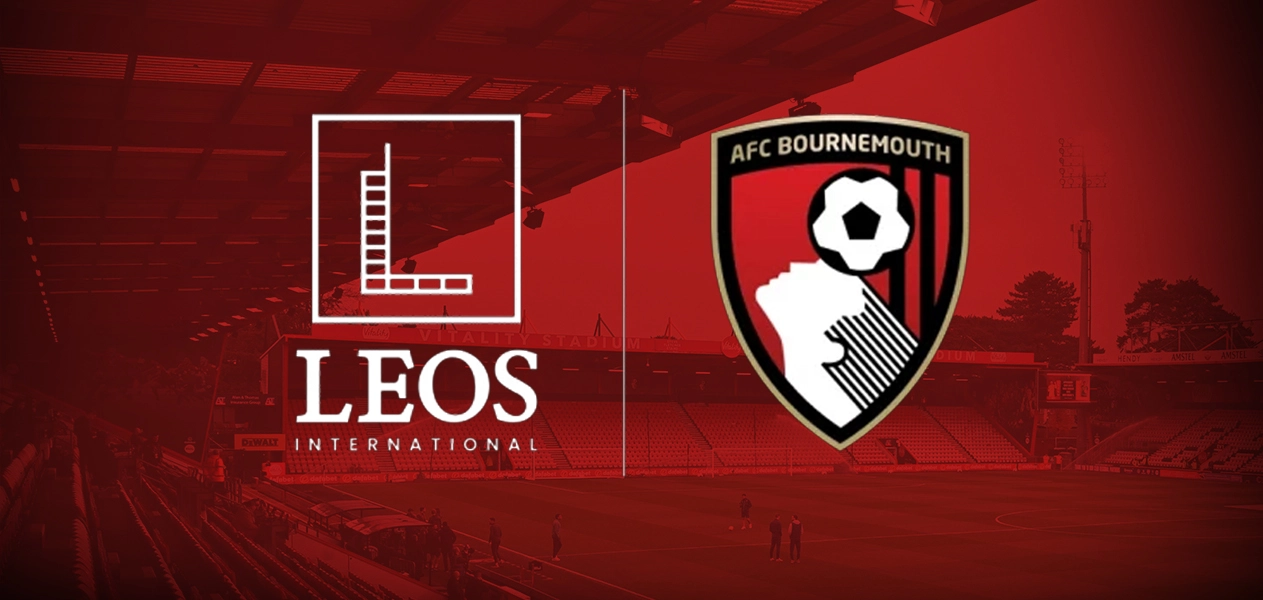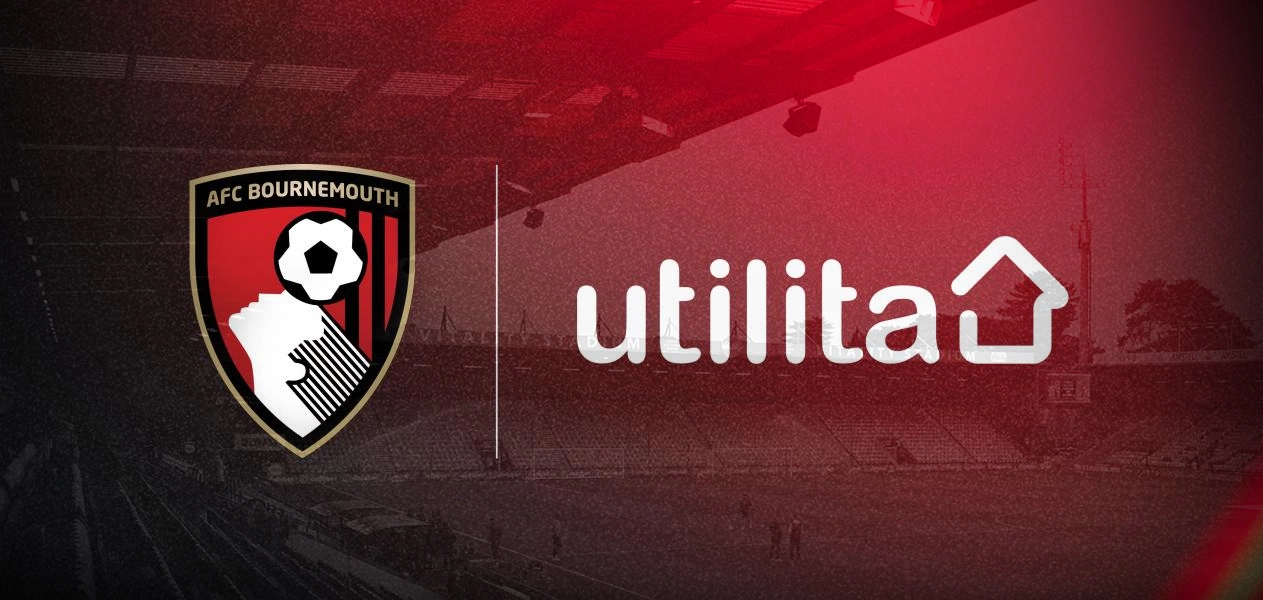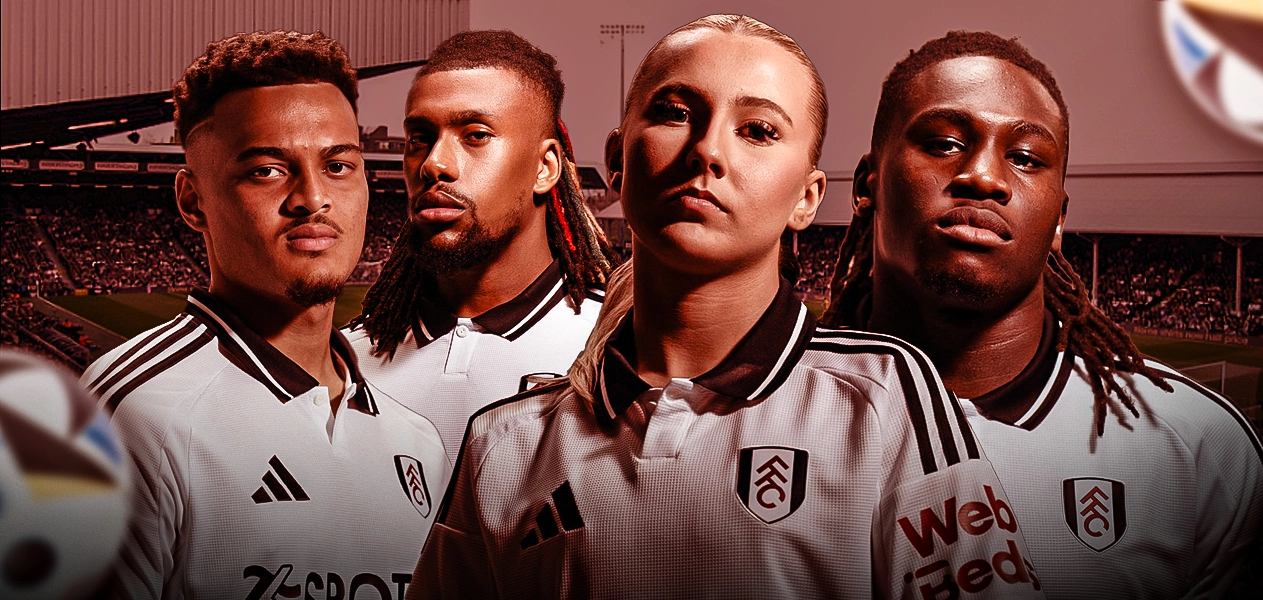The 22-year-old Portuguese midfielder has become Arsenal’s second summer signing. The Gunners are reportedly also preparing bids for Youri Tielemans and Gabriel Jesus as Mikel Arteta looks to put an end to Arsenal’s six-year run outside the UEFA Champions League.
A summer where Arsenal secured the likes of Gabriel Jesus, Lisandro Martínez, Fábio Vieira, Youri Tielemans and Raphinha would be one for the ages. However, it doesn’t look feasible unless the Gunners have taken outgoings into account when deciding upon their initial budget of £150 million.
While some Arsenal fans were watching on with envy as North London rivals Tottenham Hotspur strengthened their squad with the additions of Yves Bissouma, Ivan Periši? and Fraser Forster, the Gunners’ hierarchy were quietly brokering a deal for Porto star Fábio Vieira.
The news about the completion of this deal came like a bolt out of the blue on Thursday afternoon as Arsenal fans were just done rejoicing from the fact that their club have had a breakthrough in their pursuit of Manchester City’s Brazilian forward Gabriel Jesus, but an addition as talented as the 22-year-old should always be welcomed.
However, the bigger question is around what Vieira’s role would look like moving forward, and whether this inevitably means Arsenal will steer clear from a deal with Leicester City for Youri Tielemans. Besides, if he isn’t coming in to be a starter, was it wise to splash out in excess of €35 million on his acquisition, with a number of other areas in desperate need of addressing?
Also Read – The 2021/22 Season Review: Arsenal
Introduction
The Primeira Liga has emerged as one of the hottest markets for Premier League clubs in recent years. From Rúben Dias at Manchester City, Bruno Fernandes at Manchester United, Luís Diaz at Liverpool, to the ever-growing Portuguese contingent at Wolverhampton Wanderers, these players have proven that they can quickly transition from Portuguese football to the English game and make an immediate impact at the highest level.
Hence, just days after Benfica sold their Uruguayan striker Darwin Núñez to Liverpool for a deal that could rise to €100 million after potential add-ons, the next export from Portugal’s conveyor belt of talent has arrived on the English shores: Fábio Vieira has joined Arsenal on a five-year contract for €35 million, with €5 million on potential bonuses.
Strength in depth is something Mikel Arteta’s side were lacking at various points last season. To have an additional creative outlet, one that was responsible for 6 Goals and 14 Assists in just 1,329 minutes of league football last season, to relieve some of the burden off Martin Ødegaard’s shoulders can only be a positive. The Norwegian enjoyed a strong first full season at Arsenal and has proven himself to be one of the side’s natural leaders.
Thus, accounting for Ødegaard’s status and his bond with Arteta, his place is unlikely to be under threat from Vieira. So how does Arteta integrate the Portuguese into his midfield without negatively impacting the midfield structure from a defensive standpoint?
The most likely scenario will be one where, in his first season of bedding in, Vieira would be deployed centrally when Ødegaard is in need of a rest, and with the Europa League returning, rotation will be key. He could also provide some much-needed cover down the flanks, especially the right flank, with an emphasis on drifting in-field.
Like a bolt out of the blue
To be honest, this deal came completely out of the blue. While the English media was miles behind the curve, Portuguese journalist Pedro Sepúlveda (@pedromsepulveda) was the first person to break this news. If anything, Vitinha was expected to be the next sale from Porto (which by the way, has just been confirmed now by Fabrizio Romano, with Paris Saint-Germain securing his services as I write this) and the more sensible option, but it looks like Arsenal are firm in their stance of securing Youri Tielemans instead for that deep-lying playmaker role, that is, the more defensive one out of the two free #8 roles in Arteta’s preferred 4-3-3.
Just a few days ago, Porto president Pinto da Costa had said:
“From what I’ve heard and read, FC Porto no longer has a team, everything is gone. Diogo Costa is at Barcelona, Taremi at Fenerbahçe, Vitinha in England, and Toni Martínez at Valencia…we’ll have to start from scratch, we have no one.”
Not once did he mention Fábio Vieira, but the fact is, it was only a matter of time before he secured a big move. There were already rumours during the start of the 2021/22 season that he’d leave Porto on a free this summer. Instead, he signed a new deal and has now made Porto a huge profit.
Porto renewed Vieira’s contract until 2025 back in November. So why sell him for a value way below his release clause (€50 million)?
Well, while the 22-year-old wasn’t an undisputed starter, Porto are still in a vulnerable financial situation. They did not sell a single player last season. This, combined with their failure to reach the Champions League knockout stages, meant they were forced to sell their best asset Luís Diaz for well below market price in January last season.
Now, I’m not saying Fábio Vieira is as good as Luís Diaz, but it is worth noting that Diaz himself wasn’t a regular starter until the start of the 2021/22 season. You don’t need to be an undisputed starter to show your quality and importance to the team. Vieira in that regard is a special talent. Even with just 25 league appearances, of which 12 were off the bench, Vieira was able to attract interest from the likes of Manchester United and Liverpool along with Arsenal.
Fábio Vieira: The player
Born in Santa Maria da Feira, Fábio joined Porto’s academy at the age of eight in 2008. He rose through the ranks of the Olival production line, and it wasn’t until 2018 that things started looking up for him. He had a brilliant year with the Portugal U18 and U19 sides while also making key contributions at club level. He played a crucial role in Porto’s run to the UEFA Youth League Final, where he also scored the opener as Porto beat Chelsea 3-1 in Nyon.
Shortly after his 20th birthday, Fábio made his senior debut in a brief cameo in a narrow 1-0 win over Marítimo. However, it was during the 2020/21 season that Fábio started featuring heavily for the Dragões, making 33 appearances across all competitions. But only three of those appearances were starts as Sérgio Conceição looked to slowly bed in his youth prospects.
Often coming off the bench in the waning minutes of a match and being shifted away from the flanks to midfield, Vieira rarely had any time to make an impression, scoring just one goal and providing one assist in the league campaign. However, it was on the international stage where he truly shone, having played all five matches and having been included in the Team of the Tournament as Portugal lost to Spain in the U19 Euros final. The following year, Vieira would start alongside Vitinha, Diogo Costa, Diogo Leite and Diogo Queirós—all of whom won the 2019 UEFA Youth League with Porto—as Rui Jorge’s Portugal U21 side made it to the final of the U21 Euros before losing 1-0 to Germany.
Portugal’s golden generation failed to add to their silverware haul, but Vieira was nevertheless voted into the Team of the Tournament, while he also took home the Player of the Tournament award, following the footsteps of legendary players like Juan Mata, Petr ?ech, Rudi Völler, Fabián Ruiz, Fabio Cannavaro, Luis Figo, Andrea Pirlo and many more.
Following a few brief substitute appearances, Fábio made his first start of the 2021/22 season against Moreirense, with the then 21-year-old repaying manager Conceição’s trust by registering a hat-trick of assists in an emphatic 5-0 victory. In his next start against Liverpool, Vieira played a delightful whipped cross with his weaker right foot on the half-turn to register an assist as Porto lost 1-5 on the night.
Now, two factors played massive roles in Fábio Vieira receiving more playing time during the second half of the season: he signed a three-year deal that would keep him at Porto till 2025, and Liverpool signed Luís Diaz during the January transfer window.
While he didn’t start all his games, Vieira excelled at various positions, playing as a second striker, a right-winger (or on the left) or a central midfielder, registering an astonishing 7 Goals and 16 Assists in all competitions.
If you go with eye-test, Fábio Vieira is a classic #10, but he also played on the wings for Porto, often playing alongside the midfield double pivot of Vitinha and Matheus Uribe with Otávio on the other flank. But if you look at his heatmap, his role is more like a modern #10 instead.

The role of a #10 has changed lately with modern football, as more and more coaches move towards a transitional and pragmatic approach where the #10 is often placed on the wings to press high and track back. Some of the world’s best creators like Kevin De Bruyne, Bernardo Silva and Thiago Alcântara are tasked with such roles despite their ability to create goalscoring chances.
Vieira is capable of causing damage from dead-ball situations or winning free-kicks in dangerous areas, with his low “bouncing passes” having similarities to those of Mesut Özil at times. He is a player who can threaten the goalkeeper with his long-range shooting, who excels at receiving the ball from deep and threading it forward with line-breaking through balls, and someone who makes his teammates around him better.
Vieira is excellent at linking-up play with fellow forwards and midfielders with quick lay-off passes and one-twos, a majority of which are high-risk and high-percentage passes. He’s a player who knows how to keep possession ticking while not shying away from pulling the trigger and breaking down condense deep blocks with one incisive pass.

Vieira is an excellent passer of the ball; whether it is long or short passes, he’ll find his man more often than not. Blending in his speed, close control and excellent technical ability, he’s almost impossible to stop in full flight. Apart from his passing ability and creative vision, he has great dribbling ability and can hold onto the ball amid intense pressure in tight spaces, creating key passes, firing in dangerous set-piece deliveries or finding that inch-perfect through ball to create a goal out of nothing. He never shies away from the defensive side of things either — an aspect of his game he massively improved last season.
Whether he’s playing as a central attacking midfielder, a second striker or a wide playmaker, Vieira more often than not dictates the tempo and style of play with his nimble movement and vision to orchestrate waves of sustained attack. He’s a great distributor of the ball with a propensity to create goal-scoring opportunities with his incisive passing, often dropping deep before carrying the ball forward.
Now, when I think of left-footed #10s who can turn on a dime, are near-impossible to press due to their ridiculous close control and low centre of gravity, and drop deep to collect the ball from the defenders, I think of Bernardo Silva, and Fábio Vieira is of a similar profile albeit with few major differences.
The difference lies in relation to their directness. Unlike Silva, Vieira is more likely to force creative passes like a traditional #10. Moreover, Fábio’s final balls are excellent. He generates fantastic whip, pace and precision on his crossing from the half-spaces or the wings. Arsenal have for long lacked that type of devastating crosser/passer with vision, someone like Kevin De Bruyne at Manchester City or Trent Alexander-Arnold at Liverpool. Martin Ødegaard is a special player, make no mistakes about it, but he can often lack the power and directness to play quick or whipped balls on the counter, in transition or just behind the defence like De Bruyne or Trent Alexander-Arnold can. Vieira, however, has that quality.
Why do Arsenal and Arteta want him?
Now, we cannot talk about Fábio Vieira and his role at Arsenal without talking about Manchester City and Liverpool, their respective coaches, and maybe the history of the coaches’ footballing philosophies, particularly during their time in England.
Let’s cut to the chase: Arteta wants Arsenal to play a brand of football similar to those of Manchester City and Liverpool. They made their long-awaited switch to the fluid 4-3-3 formation in the middle of the season last season, with Pierre-Emerick Aubameyang leaving the club, and that period resulted in a marked improvement in performances as Arsenal started looking more like the top two teams and less like the rest of the league. Sadly, though, that period didn’t last for very long for various reasons, but after two years of continuous shape-shifting and tinkering with his formations, Arteta has finally arrived upon a system Arsenal had hoped for when they hired a Pep Guardiola acolyte.
With the expected incomings across various positions, the bedding in of William Saliba, and the possible incoming of Lisandro Martínez (both of whom ranked over the 95th percentile among ball-playing defenders), Arsenal would become more dominant and efficient in pushing back teams into their own halves and would definitely improve their overall possession stats, with more emphasis on sustaining waves of attacks which stood at just above 52% last term.
So, this nicely leads us to the question both Pep Guardiola and Jürgen Klopp have been trying to answer for years: How do you break down a compact, well-dribbled low block?
While their fundamental philosophies on the outside differ from one another, as Pep emphasises positional rotation on the ball and Klopp emphasises positional overloads while counter-pressing, what’s common is both have approaches that focus on generating superiorities against opposition blocks. However, in recent years, these superiorities—whether numerical, dynamic, positional, associative or collective—have been maxed out by both teams, hence why it is ironic how both Pep and Klopp have moved away from their false-nine philosophies to a traditional #9 at the exact same time.
Teams have grown smarter and more compact in recent times when defending. They are aware that if they deny space, very little can be done to penetrate the central block. In general, teams are putting more and more physical and individual quality in their middle or low blocks to further close the gaps between the attacking and defensive cycles.
In most cases, a team can watch fifty games of Pep’s Man City and identify all the details in the attacking principles and can consequently come up with new defensive principles to negate them. As quipped by one of the greatest managers ever in the game, Carlo Ancelotti once said, “Defending is more about organisation and structure than talent.”
But the general setup of these teams is that they are more than willing to vacate space in deeper areas to make space scarce in higher, more valuable areas. However, nowadays, space is available in abundance in deep and wide areas. Therefore, you need playmakers that can be comfortable and consistently reliable in creating from those areas as they are further up the pitch. Now, the problem here is this: there are very few playmakers like that in world football. Enter Kevin De Bruyne and Trent Alexander-Arnold. Basically, both De Bruyne and Alexander-Arnold are the crème de la crème in this regard. They are primary creators for their team, whether in settled play or transitions. But not just that, their roles are relevant for one particular reason: they are both extraordinary in creating chances from deep spaces. Their teams constantly peg opposition teams back inside very low compact blocks and hance need someone who can unlock these teams even if they are outside or around the blocks at a further distance than normal.


Now, if you look at the teams on the first table, Arsenal were fourth in the league last season in terms of territorial dominance, while they had the third-highest defensive line of all PL teams. As I alluded to earlier, Arsenal and Arteta want to emulate Man City and Liverpool, and they are almost there. But there’s one problem: they don’t have a KDB or TAA.
So, as seen on multiple occasions last season, Arsenal were efficient in pegging teams back but couldn’t create much outside the blocks teams had around their penalty areas. It’s not that they couldn’t or didn’t do it, but without the missing pieces, their system was less efficient and sustainable, which is why Arsenal’s matches became more open as it reached two-thirds of any league or cup game.
Now, Martin Ødegaard, who is the de facto primary creator for Arsenal, is more of a traditional #10 who excels closer to the 18-yard box. In fact, he is the most dangerous passer in the league from the most dangerous zone of the pitch: Zone 14.

However, looking at his deep pass completions, it seems the longer or farther they are, the less successful they are, especially when arriving from the opposite side. Ødegaard isn’t of the same mould as De Bruyne or TAA. He needs to get closer to harm the opposition. This means Arsenal take more risks than Liverpool or Man City do to create. They need to move the ball in short distances in tightly-patrolled close spaces to create a shot.

This is where Fábio Vieira comes in. He epitomises Jogo Bonito (Portuguese for “The Beautiful Game”). He has the perfect blend of la pausa, which makes him near-impossible to press, much like Bernardo Silva, while his devastating vision and ball-striking on either foot allow him to pick out exceptional final balls like De Bruyne.
What I’m referring to is a mix of both Bernardo Silva and Kevin De Bruyne, which is utterly ridiculous to read, but that’s the reality of the situation. Output-wise, the stats of both De Bruyne and Bernardo are a little inflated because of how ridiculously good Man City are, but do keep in mind that Vieira won’t be joining the end version of a project. So, his output should be somewhere between Bernardo’s and De Bruyne’s, starting off like Bernardo’s initial couple of years at City.
Also, even though expectations are already high, it is important to take into consideration that Vieira is just 22 and has only two senior seasons under his belt in the Portuguese league for Porto. He’ll now be joining arguably the most competitive and physical league in the world.

One of the biggest letdowns for Arsenal last season was the lack of technical quality in the #8 role, with Granit Xhaka filling in that box-to-box role, which is not really his game. He isn’t comfortable with receiving the ball between the lines and can’t turn on a dime; he’s strictly a double-pivot player.
As you can see in the graph above, Fábio Vieira is the dream profile to take up that role at Arsenal. His half-space and wing crossing, ability to interchange with Arsenal’s left-winger and left-back, along with being able to receive between the lines and being comfortable in dropping deep to collect the ball from the defenders and progress play forward effortlessly, is the type of dream profile Mikel Arteta had been looking for.
If Arteta were to create a player in a lab to play the hybrid #8/#10 role for his 4-3-3 system, he would look something like Fábio Vieira.

Conclusion
Now that we’ve addressed most facets of his game and how he would improve Arsenal in key areas of the pitch, it’s time to address one of the most important questions: how do Vieira’s physical and mental profiles match up to the daunting task of joining Arsenal at such a young age with little experience at senior level?
Well, while analysing Fábio Vieira, it became clear to me that he’s a man who players look up to. He regularly gives his teammates advice on the pitch and specifically seeks them out to lead by example. For a 22-year-old to carry himself around like that suggests only one thing: he’s a leader and a model professional, who was also recently appointed as the captain of Portugal’s U21 team.
Moreover, last season, there were instances where Fábio was given the captain’s armband at Porto. While people who don’t know much about Portuguese football wouldn’t think of it as a big deal, Porto are like the Manchester Uniteds and Arsenals of Portugal, and getting the armband at such a young age speaks volumes of his mental qualities.
Now, what about his physicality? Firstly, Vieira is a tenacious player with a very high work rate, something that has become one of the fundamental requirements to play in a Mikel Arteta system. Secondly, a closer look at his profile shows his natural robustness. It’s near-impossible to press someone like Vieira due to his low centre of gravity and close control dribbling as discussed above. So, all a player needs from a physical standpoint is to be robust mentally to ride tackles and carry on with the game when fouled; Vieira does precisely that.
Thus, the idea behind signing a player like Fábio Vieira is to increase the technical quality of the team to help enable Arsenal to become a team like Manchester City, who starve the opposition of the ball. Players like him go a long way in achieving that, as he could fit in at any of the #8 or #10 roles or even play as a cover for Bukayo Saka on the right.
However, it is imperative to take into consideration that Vieira will only be the second #8 in the team (third if you think Emile Smith Rowe might also fill in), and having three players vying for two starting positions screams lack of depth, especially with the team set to compete on four fronts next season. Thus, Arsenal will definitely be looking to add another #8, preferably Youri Tielemans, although the buzz has died down a little ever since Fábio’s arrival was confirmed by various journalists.
That being said, I still believe Arsenal will surely press on with that deal a bit later down the line and will look to secure targets that need immediate attention: the likes of Gabriel Jesus with Paris Saint-Germain and Spurs lurking in the background, Raphinha with Barcelona and Spurs keeping tabs on the situation, and Lisandro Martínez, for whom they are in direct competition with Manchester United, who have his former boss Erik ten Hag as their manager.
Nevertheless, as far as Fábio Vieira’s deal is concerned, it’s an utterly incredible signing and an absolute bargain in comparison to what his skills could offer in terms of output in the long run. Mikel Arteta has again shown that his talent identification is elite, while credit needs to go to both Edu Gaspar and Richard Garlick for wrapping this deal up without much fuss.






Leave a Reply